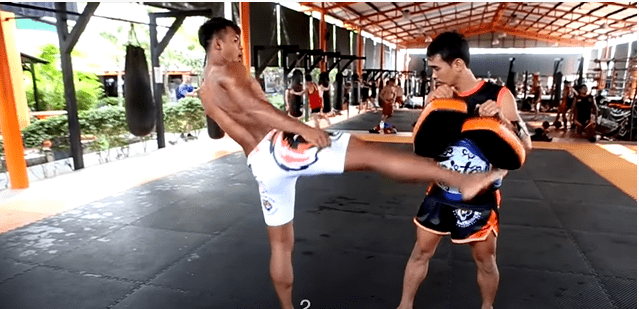All types of kicks are tough to learn. If a person wants to learn it, he requires proper training and comprehensive training to pull off in combat. As weapons, it implicates the practice of your shins, corners, and knees. Strong kicks play a crucial role in a performance. There are numerous facets to evaluate the reason Muay Thai kicks are so vital. In this post, I will talk about Muay Thai kicks. Here you will find some of the categories of kicks that require to be known as a fighter.
About Muay Thai kicks
To learn the kick procedures, enroll yourself in a respected martial arts training center. The center focuses on unique abilities and enables you to uncover your ability to fight.
In competition, people can see many types of kicks. Kick techniques are sufficient to knock out an opponent. All it seizes is an influential kick and you can deliver your competitors down. These strategies are discovered and it takes a long time to understand them. Constant training is crucial to improve the strength of every kick put to the competitor.
Without squatting fighters keep their legs hard when throwing a kick. The fighters reach it with the shorter and lower part of the shin. It makes a difference from kickboxing where they land it with their feet. In a competition, fast and strong low kicks have become one of the greatest beneficial weapons.
Several Muay Thai kicks
Push kick:
Push kick has another name. The other name is a deep kick. This category of kick is a long-range consecutive foot push. A push kick is a strong weapon to target the opposition’s face, hips, and abs. It enables them to prepare for an attack and maintains the competitor at a distance. In a competition, it is an aggressive, quick, and disruptive move. This move affects competitors extremely.
Low kick:
Low kick generally targets the outer or inner thighs and knee joints. It is an extremely strong kick. Fighters evaluate it as one of the most violent sports. It is like slamming the leg of the competitor with a baseball club. If you use it correctly, this move can bring about the competitor’s fall. It can save you a huge score in matches.
It targets the body’s broadest and extended nerve. It begins at the lower back and finishes up at the feet. Striking this nerve can destabilize your competitor. An opponent can lose agility and lessened mobility. Frequently, fighters can target the lower leg. They also target thighs and harm their competitor’s stamina, bones, joints, and ligaments. It is beneficial in smashing the opponent’s will to battle and can quit attackers in their trials.
If you want to put a low kick, you have to spot your legs forward of your body. Most fighters thrive for the thigh. Yet you have to rapidly decide which portion you will get on for. In this position, swivel your left leg and twirl the right to land the kick once you have. Your body must roll in the same guidance. Accordingly, you should use your impetus to destroy your opponent. Keep in mind always one thing, fighters should not allow their defense down. They always maintain their body and head from counterassault.
Mid kick:
Mid-kick targets the body, arms, and ribs. This kick attends an attack on the competitor’s which creates it tough for the competitor to sustain a strong defense. This kick of the arms also diminishes the strength of the competitor’s punches. Mid kick is used as a body kick. It is a trademark trick that paves the direction for a fight-ending huge kick.
High kick:
The high kick targets the neck and head. In a sport, a high kick is a fight finisher. There are some stunning Muay Thai kicks moves. It relates to conning the competitor to reduce their guard before intending for the neck or head.
Switch kick:
This kick is generally used as a weapon to deceive the competitor with timing, footwork, and momentum. It facilitates a fighter to instantly shift the strong leg to attack the competitor’s body.
This fluctuation is for practitioners to rapidly switch their positions. If a competitor is right-handed, the left leg will commonly be in front. On the other hand, when a competitor switches, the left leg will become the power leg, enabling him to be ready to attack a foe’s right side. This kick can also be used for a vast range of attacks. Yet, we should remember not to fall on both legs when shifting our position. We can take a couple of sharp steps. We also should remember to put the key leg back and pull the back leg forward. We should do it to remain foundered and maintain balance while changing positions instantly.
Diagonal Kick:
Diagonal kick targets the thighs, neck, arms, ears. It also targets a rib cage. It should ideally create a forty-five-degree angle against the floor to achieve maximum efficiency. Besides, the body requires to be stopped in the different paths of the kick. The leg will be swung upward. This enables the fighter to strike the competitor effectively. Remember, the kick should be greater with the verifying leg, stemming in the body possessing an extra angle in a unique direction.
Jumping kick:
Jumping kick is not a familiar category of Muay Thai kick. Yet it is an extra remarkable trick than any common kick. It obliges the fighter to leap while intending to kick. The impetus and the strength developed during the kick are extremely high which brings about one of the powerful Muay Thai procedures to use.
A normal Muay Thai kick transfers stability similar to the swing of a baseball bat at four hundred eighty pounds of force per hit. People know it as the powerful kick in martial arts. However, we tried to deliver the essential muay kicks details. If anyone wants more information about any kick techniques, please let us know.
